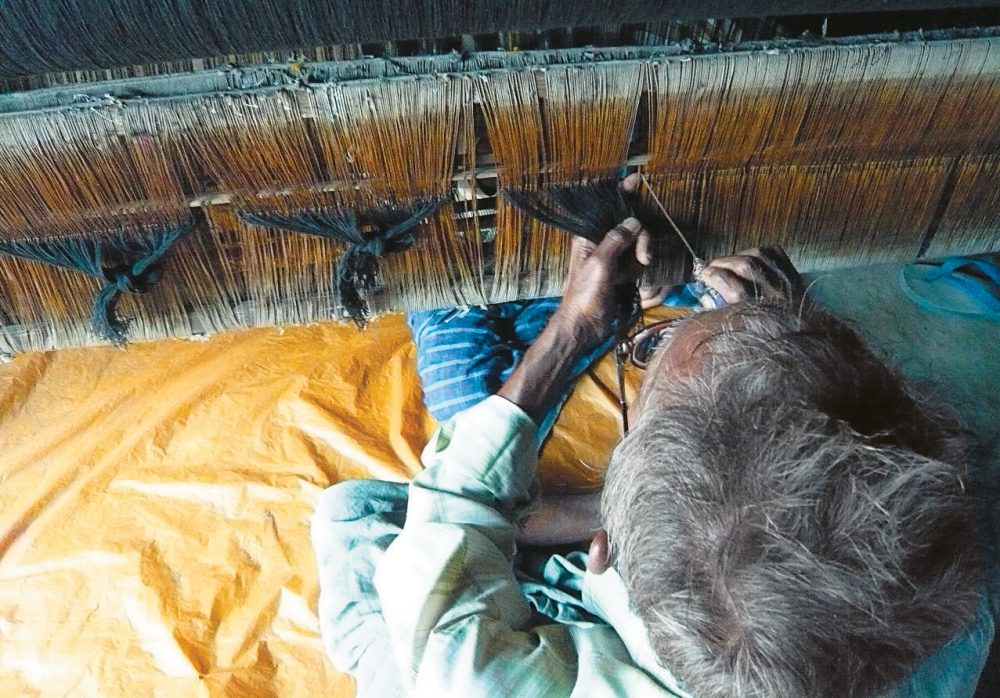India is an enchanting place that many people dream of one day visiting. Those dreams are especially vivid when you are tucked in bed under a vibrant Indian silk quilt. But for Mitun Chakrabarti, travelling back to her native country is a frequent reality, and especially as of late: Chakrabarti launched Rajboori, a luxurious collection of silk bedding products, in January 2009.
After 24 hours or more of travel by air to Calcutta from Vancouver, Chakrabarti embarks on a train overnight, and then drives another hour by car to the North Eastern region of India. That is where the silk weaving takes place. Suffice to say, it took a lot of research on Chakrabarti’s part to locate this particular village, as each region of India offers a different variety of silk. As Chakrabarti explains, the silk Rajboori uses is different than the fine, South Indian silk that Westerners are perhaps most accustomed to seeing—the kind used for saris. “Most sari silk is too delicate for home textiles,” Chakrabarti says.
“I was also feeling uncomfortable with what I was learning about silk extraction, and knew my collection needed to be eco-friendly.” She persisted with her research, and eventually discovered a few varieties that together are known as Peace Silk. With these silks, Chakrabarti says, “the worm emerges as a moth, after cutting its way out through a hole in the bottom of the cocoon. We don’t collect the cocoons until after the moth has emerged, which means it can live its full life.”
In comparison to sari silk, the basic Peace Silk yarn is much more subdued and organic looking, and has a natural, earthy quality. Rajboori textiles are much warmer and more woollen to the touch than you might expect. “There was a lot of experimenting with the texture, in the beginning, because some Peace Silks, in their natural form, can be quite coarse,” Chakrabarti says. “But the variety we’ve used for Rajboori has a cottony texture and is much softer.”
“The men sit facing each other with large tamarind wood blocks between them. The silk is laid upon the blocks, and with tamarind wood hammers, they beat the silk. It is really quite comical, but this is where the lustre comes from.”
From the moment Chakrabarti decided to use Peace Silk, she knew she would be depending on this village of some 200 families, because they specialized in wild and semi-wild silk varieties. Chakrabarti explains that “it is difficult to weave a silk, if it is not familiar with the local craftspeople, and the jacquard weave we use can distinguish the artisans of this region. There are only a number of looms equipped for this weave, with this silk, which makes it only possible in this one community.”
It is in fact a community effort; everyone has their role. After the silk has been spun and dyed, the women gather in the village courtyard to spin the bobbins. Meanwhile, inside the home, you find the men with the looms, weaving the silk’s warp and weft. For the Rajboori jacquard, it takes 10 to 15 days to set up the loom, and then a constant monitoring of the pedals. When the weaving is complete, the silk is treated, with starch for example, based on the desired softness, and then beaten. This is the stage of production that Chakrabarti enjoys watching the most. “The biggest men in the village do the beating,” she says. “They sit facing each other with large tamarind wood blocks between them. The silk is laid upon the blocks, and with tamarind wood hammers, they beat the silk. It is really quite comical, but this is where the lustre comes from.”
Even the youngest children participate, although they may not know it. “Running around under daddy’s loom is part of the learning process”, Chakrabarti says. This is how the skills are passed down through the generations, as they have been for over 600 years. “It is traditional for you to follow in your father’s footsteps, especially in the villages. Respect is key to Indian societal structure,” Chakrabarti tells me.
I ask her what her experience is like, as a fairly Westernized woman, leading a small Indian village. She laughs, and says, “At first, the other women would look at me a bit quizzically from under their pallu [the part of the sari that can be worn wrapped around the head]. To see a woman leading! They are a quiet people, but once you get to know them, you feel you have been a part of their family for ages.”
The Indian people have a legend about how silk arrived in their country, and it involves a Chinese princess who brought it there. I have a legend about how silk arrived in North America, and it involves Mitun Chakrabarti.










